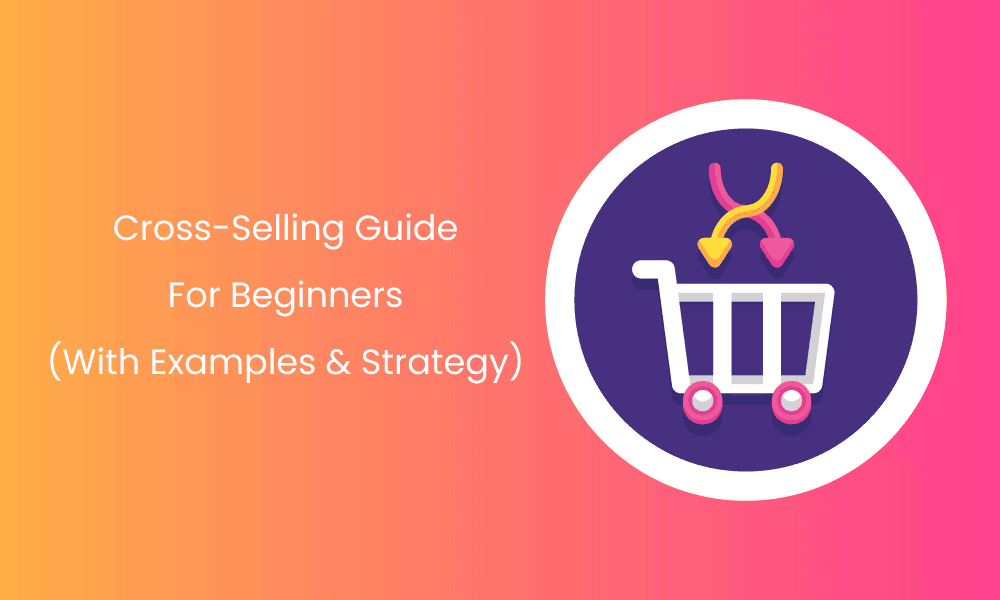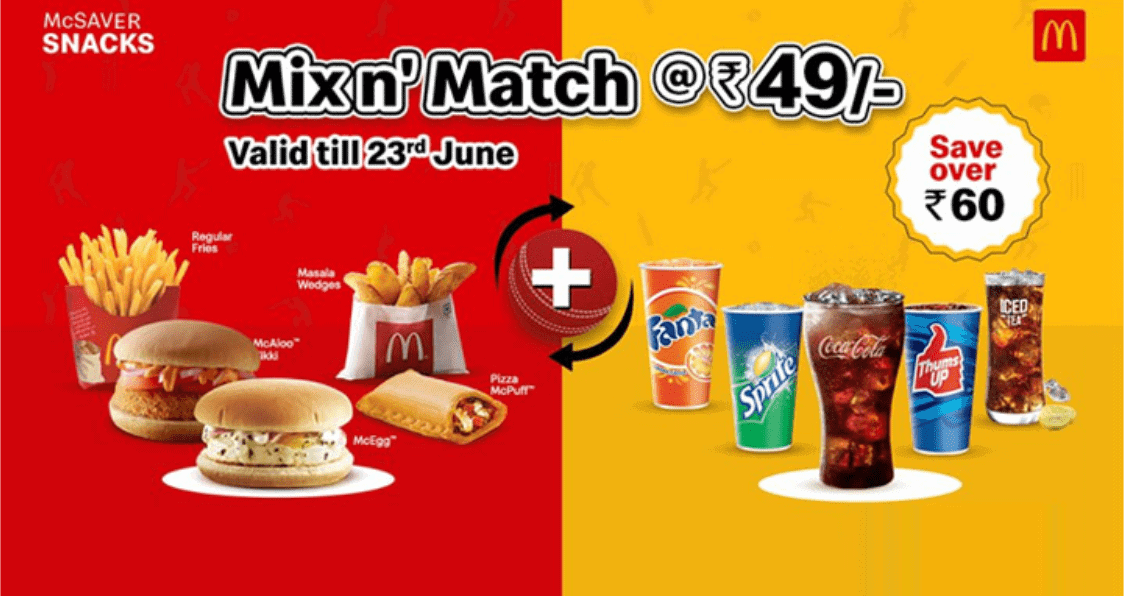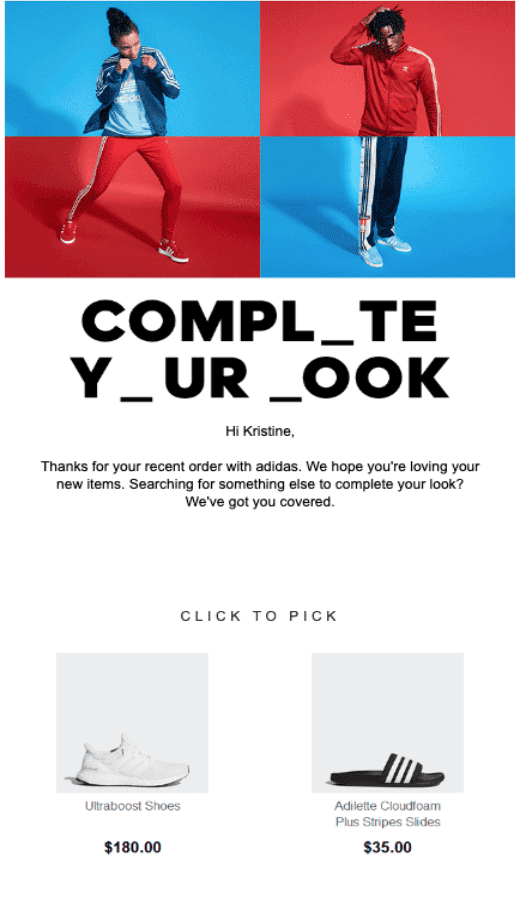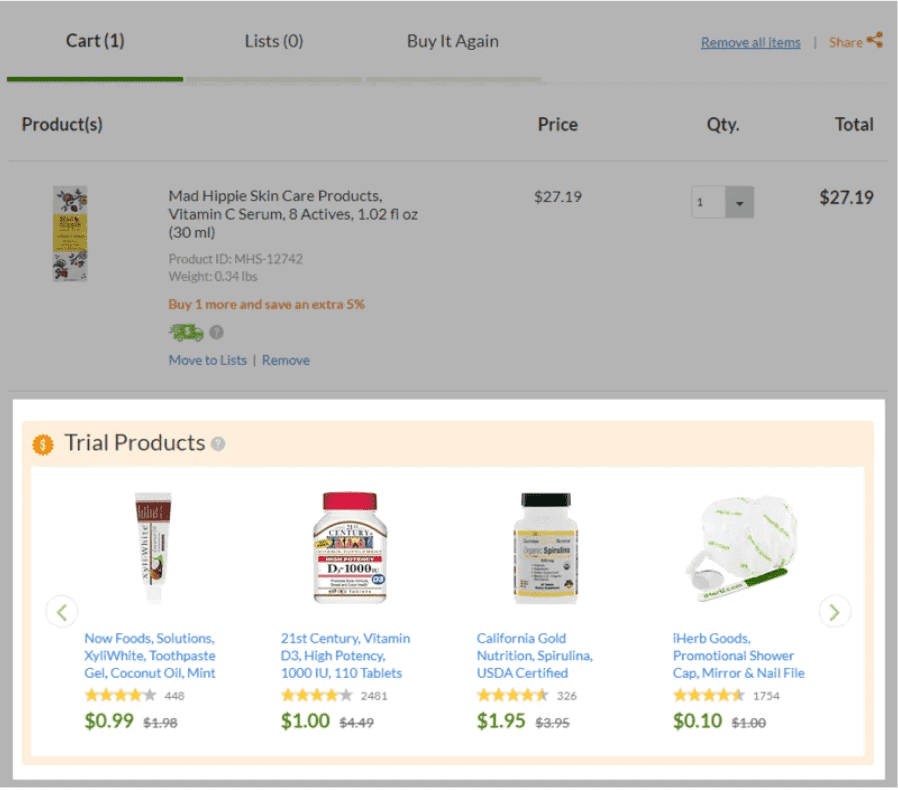Cross-selling is a great way to increase revenue and can be done in a variety of ways.
Some common methods include suggesting related products to customers who are browsing your catalog or website, or providing recommendations to customers based on their past purchases.
Cross-selling can also involve bundling products together or offering discounts when customers purchase multiple items.
Whatever method you choose, cross-selling is a great way to increase sales and drive customer loyalty.
In today’s blog post, we are going to discuss:
- What cross-selling is
- How it differs from upselling techniques
- How popular brands cross-sell
- How you can develop effective cross-selling strategies
Table of Contents
What is Cross-Selling in Business?
Cross-selling is the practice of selling related or complementary products to the existing customer.
Commonly used in the financial services industry, cross-selling is believed to be among the most effective marketing techniques. Why?
First of all, cross-selling helps in building customer loyalty since brands are able to offer more products and services to their clients.
This, in turn, increases customer satisfaction, because clients don’t have to look elsewhere to buy complementary or related products.
Besides, cross-selling prepares brands to be in a better position to sell additional goods as they become aware of their customers’ expectations and objectives.
How Does Cross-selling Work?
Let’s say that you are an existing customer for a small business. You want to purchase a pair of jeans. You go ahead and place your order on an eCommerce website. Once you have placed your order, you might see related or complementary products on offer from the same brand.
These products could be a similar pair of jeans, or apparel that goes well with that pair of jeans.

Similarly, if you purchase a book online, you may find other books of the same genre on offer.
Some brands persuade customers to buy additional products by creating a bundle and selling it at a lower price than what you would pay if you had bought the same products separately.
Read also: Tips & Examples to Help You Build a Stellar Creative Strategy
Why is Cross-selling Beneficial?
With cross-selling, you can make your customers feel understood.
By offering related or complementary items, your brand indicates that it cares about its clients and understands their expectations. This also helps you improve customer service and get new clients more easily.
By enhancing customer satisfaction, you are also ensuring brand loyalty. When they get an improved customer experience, people do not feel like looking elsewhere for new or related products.
Happy customers would want to buy from the same business again and again rather than searching for the same products from different brands.

Moreover, with cross-selling, you can increase revenue. By offering similar and complementary products every time a customer makes a purchase, you can sell more products with less effort.
This will not only boost customer retention but also increase sales.
What is the Difference Between Upselling and Cross-Selling Products?
Just like cross-selling, another effective sales technique is upselling. Most often, people tend to use the terms interchangeably, but they differ vastly.
Let’s say you are at a cinema hall and want to buy a bucket of popcorn. The sales clerk suggests that you add complementary products such as a glass of cold drink with the popcorn. This is known as cross-selling.
However, if the sales clerk had asked you to buy a bigger bucket of popcorn, this would be called upselling. Upselling is a sales technique wherein customers are persuaded to buy an upgraded or a more costly version of a product or service.

Also known as suggestive selling, upselling aims to convince clients to purchase a more expensive version of an existing product or service. Through upselling, companies try to maximize sales and profits as well as improve customer value.
Unlike cross-selling, which involves selling related or complementary items, upselling involves persuading people to buy a better or more improved version of the same product.
The improved version may have additional features and is usually more expensive than the original product.
Examples of Cross-Selling From Popular Brands
Cross-selling is not a new concept for brands. You will find big brands using cross-selling strategies to boost their revenue for ages.
Here are a few best cross-selling examples across popular brands that will help you get started.
#1. Amazon
One of the best examples of cross-selling is Amazon. Whenever you order a product from Amazon, it shows related items or products that are frequently purchased by customers.
The reason why Amazon has been able to execute cross-selling so well is due to automation. The automated formula helps track customer data, in terms of the items bought by people, and accordingly, suggests what items should be ordered together to customers.
Running a successful online business involves implementing effective cross-selling strategies. Amazon Seller Tools offer valuable resources to help you achieve this.
These tools provide insights into customer behavior, automate product recommendations, and allow you to track sales performance.
By leveraging Amazon Seller Tools, you can develop personalized cross-selling campaigns that resonate with your customers, ultimately increasing sales and fostering customer loyalty. Check out this article for the best Amazon Seller Tools.
#2. McDonald’s
One of the best examples of cross-selling is McDonald’s. How many times have you ordered something at McDonald’s and heard the cashier ask, “Would you like fries with that?”
Further, the cashier also asks customers if they would like a drink to go with their meal. This helps McDonald’s sell more than 4 million kilograms of fries around the world daily.
Further, customers are enticed to purchase a meal, since it costs less to buy a combination than ordering these items individually.
#3. Adidas
Source
Have you shopped for clothes online? How often have you received suggestions on completing your look? Adidas cross-sells its products by giving product recommendations on how you can complete your look.
If you buy shoes from Adidas for instance, its online store will display a range of products that you can buy to enhance your look. These products can include socks, track pants, jackets, t-shirts, and so on.
#4. iHerb
Source
iHerb is an online retail company that specializes in health and wellness products. iHerb has a unique cross-selling strategy. It does not convince customers to buy additional products at a discount.
Instead, whenever you order a product from iHerb, it will display a range of trial products that you can add to your cart, for free.
This way, customers will want to make more purchases from iHerb in the future, as they know that they would receive free or trial products on every order.
#5. Apple
Source
Apple cross-sells its products by offering bundled schemes. Under the bundled scheme, Apple provides four types of services at a discount, whenever customers buy an Apple Watch.
The bundled scheme usually includes a warranty service for up to three years, a USB-C to USB adapter, and a USB-C to Lightning Cable.
#6. AT&T
Source
AT&T is an American telecom giant and is the world’s largest telecommunications company. The company has managed to successfully implement cross-sell strategies by using its satellite TV business to sell wireless plans to its customers.
This has resulted in wireless subscribers adding pay TV to their plans, as a result of which, AT&T has over 150 million wireless accounts in North America and over 39 million video subscribers.
Read also: 14 Creative Customer Engagement Strategies for Small Businesses
How to Develop a Cross-Selling Strategy?
By now, you are familiar with various cross-selling techniques.
But how do you create a winning cross-selling strategy? Here are hacks that always work.
#1. Identify Suitable Customers
The first step towards developing a successful cross-selling sales strategy is to identify the right customers.
You cannot sell the same type of products or services to all your clients.
To understand how to boost sales while enhancing customer satisfaction, it is important to understand your consumers’ persona and buying patterns.
You can start by observing their buying patterns and purchase history. Accordingly, you can offer them related and complementary products when they want to make a purchase.
#2. Identify Related Products and Services
Once you have identified your target audience, it is time to find out which products and services you can use for cross-selling tactics.
You can use information gathered from in-person and online communication to understand your consumers’ buying behavior and whether they have returned any products in the past.
This will help you understand what products you can offer to each client and which goods would most likely be purchased.
#3. Create a Cross-Selling Campaign and Customer Journey
Once you have figured out your target customers and related products and services to offer, it is time to build a cross-selling campaign.
If you have an online store, cross-selling through ads displaying related or complementary products can help increase sales.
These ads could either appear during the checkout process or after a buyer has placed an order.
Moreover, you can also send emails to existing clients, informing them about additional or newly launched products and services they might be interested in.
#4. Make Use of Existing Inbound Campaigns
To execute a winning cross-selling strategy, it is best to make use of any existing inbound marketing campaigns.
If you have marketing content that targets an audience interested in buying smartphones, for instance, you can include ads for mobile phone accessories such as phone covers, power banks, and phone chargers, to your ads and product descriptions.
This will not just increase sales of smartphones from your brand but also boost demand for related products.
#5. Make Effective Use of Customer Data
To understand how you can execute effective cross-selling strategies, it is suggested that you understand customer data well.
With the help of customer information, you will not only get an idea of your target market but also their expectations from your brand and what they wish to gain from it.
Moreover, with an increasing number of brands offering personalized marketing, cross-selling is another way to ensure that you care about your clients.
Read also: 8 Upselling And Cross-Selling Strategies For Small Businesses
Conclusion
Cross-selling is an effective sales and marketing technique that involves selling related or complementary products to customers.
Through cross-selling, businesses can not only boost revenue but also improve customer loyalty and gain new customers.
With the help of marketing and CRM tools like EngageBay, you can gather data and track your buyer’s patterns and behavior. This will allow you to market your products and services to the right customers at the right time!






